Fall Migration
With the coming of September, fall migration has already started for many bird species. The earliest birds begin migrating in late July and early August. According to the American Heritage Science Dictionary migration the seasonal movement of a complete population of animals from one area to another. Birds are not the only types of animals to migrate. Whales, elephant seals, bats, salmon, and monarch butterflies are examples of other migrating animals. Migration is related to food supply, temperature, and even reproduction.
In some species such as sandhill cranes and whooping cranes the parents migrate with their offspring and remain a family unit through the winter. Other young animals must find their way on their own. The ability of these young animals to find their way on their own is still a mystery. This knowledge of where to go seems to be genetic. Many of the hawk species follow the coastlines or rivers going south. Others may use the position of the sun and stars. It is also possible that some use the earth’s magnetic fields.
In Williamson County, there are birds that come and raise their families in the summer and leave during the winter. Scissortail flycatchers are an example. Many warblers and shorebird species fly through Central Texas in the fall and spring on the way to and from their breeding grounds and their winter-feeding grounds. Several hawk, sparrow and waterfowl species end their fall migration in Central Texas and spend their winters here. The American kestrel is one of the hawks that winter here.
Complete migration is when every member of a species moves each year. Partial migration is when some individuals stay in one place all year long and others migrate. Humans actually are an example of partial migration. In Texas and all of the other southern states, many retired folks leave the wintery weather of the north and come to enjoy our warmer winter weather.
Some migratory routes may be as simple as moving from the upper slopes of high mountains to avoid the heavy snowfall and lack of food to the warmer valleys below. The artic tern has one of the longest migrations moving from the Artic to the Antarctic and back. Several of the bird’s species use one route to go north each spring and a totally different route to go back south. The monarch butterfly has an especially intricate migration. The monarchs that will be migrating south this fall will actually live longer to both make the trip south and to overwinter in Mexico. When they come back north, it will take several generations during the summer to reach their northernmost breeding ground. The middle generations live only a short time.




You must be logged in to post a comment.